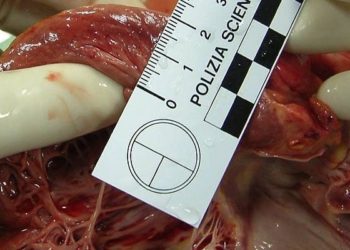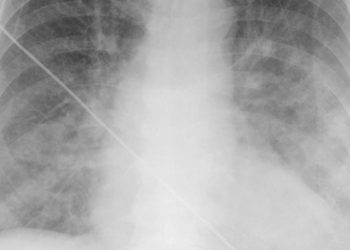Adaptive ventilation for central sleep apnea linked to increased mortality in heart failure patients
1. Patients with reduced ejection heart failure (HF) and central sleep apnea who received servo-assisted ventilation did not show a difference in the composite end point of death in comparison to similar patients receiving standard medical care.
2. Patients receiving adaptive servo-ventilation had a significant increase in all-cause and cardiovascular mortality compared to controls.
Evidence Rating: 1 (Excellent)
Study Rundown: There is a strong association between central sleep apnea and heart failure, with approximately 50-70% prevalence rates of sleep apnea occurring amongst patients with reduced ejection fraction HF. Two mechanisms by which central sleep apnea may play a role in HF include increased sympathetic tone and recurrent hypoxemic events. Adaptive servo-ventilation represents a potential non-invasive, nonpharmacologic means by which to improve central sleep apnea. This study investigated outcomes in patients being treated with versus without adaptive servo-ventilation. While there were no significant differences in first event of death from any cause between treatment and control groups, the treatment group had significantly higher all-cause mortality and cardiovascular mortality.
Click to read the study, published today in NEJM
Relevant Reading: Adaptive Servoventilation for Treatment of Sleep-Disordered Breathing in Heart Failure:A Systematic Review and Meta-analysis
In-Depth [randomized controlled trial]: The Treatment of Sleep-Disordered Breasthing with Predominant Central Sleep Apnea by Adaptive Servo Ventilation in Patients with Heart Failure (SERVE-HF) was an international, multicenter, randomized, parallel-group, event-driven trial. It included a total of 1325 patients with reduced left ventricular ejection fractions of 45%, apnea-hyponea indices (AHI) of 15 and a predominance of central events were randomized to a standard medical treatment with adaptive servo-ventilation versus standard medical treatment without adaptive servo-ventilation. The primary end points included first death from any cause, lifesaving cardiovascular interventions or heart failure exacerbation requiring unplanned hospitalization and secondary endpoints included cardiovascular death. Data was analyzed via group-sequential design. Patients were assessed at 2 weeks, 3 months and 12 months and every 12 months after until study completion. There was no significant difference between the treatment and control group (HR of 1.3NP, 95% [CI]: 0.97, p = 10). All-cause mortality and cardiovascular mortality were higher in the treatment group (HR 1.28, 95% [CI] 1.09 to 1.65, p=0.006). The two primary limitations of this study included its unblended design and focusing solely on patients with reduced ejection fraction HF.
Image: PD
©2015 2 Minute Medicine, Inc. All rights reserved. No works may be reproduced without expressed written consent from 2 Minute Medicine, Inc. Inquire about licensing here. No article should be construed as medical advice and is not intended as such by the authors or by 2 Minute Medicine, Inc.






